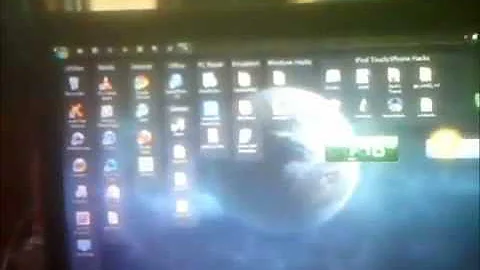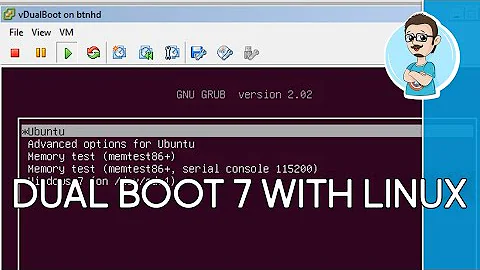Installing Ubuntu 10.10 / Windows 7 dual boot confusion
Solution 1
Setup:
/dev/sda5 ext4is your ubuntu partition,
Select it and set the filesystem to ext4. Set the mount point to / (this is what you missed and why the installer was complaining). If you check the box next to format you will get a clean install, if you don't check it ubuntu will not overwrite your /home folder, so all your files and settings should be there after installation
/dev/sda6 swapis your swap partition
Set its filesystem to SWAP (it will be formated, but this is OK)
/dev/sda2 nftsis your windows partition, leave it alone/dev/sda1 nftsis probably some system partition from the OEM, also leave it alone.
What is a "swap area" anyway ?
Swap is used to store data if your RAM is full. It is also used to copy your RAM to if you hibernate your PC.
Solution 2
If you had multiple linux partitions and you don't remember the content per device names you will need to manually mount them and verify the contents. Boot from the live cd with the "try it without installiing" option, then launch a terminal and check the list of partitions:
sudo fdisk -l
Example output:
Device Boot Start End Blocks Id System
/dev/sda5 72947 76593 29294496 83 Linux
/dev/sda6 76594 80240 29294496 83 Linux
Checking the contents of /dev/sda5 :
sudo mkdir -p /media/sda5
sudo mount /dev/sda5 /media/sda5
gksudo nautilus /media/sda5
Solution 3
If you boot into the Live CD you can access System > Administration > Gparted. You can look at the filesystem type and your windows is NTFS while the Ubuntu partitions are likely ext3 or 4.
Solution 4
I just had to do this earlier today. What I did was I found out which partition was formatted as FAT and which was formatted as ext4. It was fairly obvious in the "Select partition" screen. I selected the ext4 partition for the installation partition.
Solution 5
How do I go about defining a root file system?
If you select manual partitioning, you can delete the sda5 (ext4) and sda6 (swap) partitions. This will give you a bunch of free space. Click on the free space and Add a partition. Size it to be about 2 GB less than the available free space. Select ext4 and in the Mount Point box select / which gives you root. Now the system tells you that you have a new ext4 partition and 2 GB of free space. Click on the free space, add a partition and, instead of the default ext4, select swap. Now, you have an ext4 partition where Ubuntu 10.01 will be installed and a swap area which Linux uses as temporary storage space when the operating system is running.
[I'm not sure if you need to delete and recreate the swap partition, but this process keeps things relatively tidy - Ubuntu will be (perhaps) sda7 and the swap partition will be the next available number (sda8).]
Related videos on Youtube
TRiG
Updated on September 17, 2022Comments
-
TRiG almost 2 years
I had an Ubuntu 9/Windows 7 dual boot. (I almost never use the Windows side, actually.)
Ubuntu was bugging me to update, so I tried it (backing up everything first). Somehow, the update failed (I think because someone turned the computer off at the socket half way through). The computer now refuses to boot into Ubuntu.
Now I have an Ubuntu 10.10 install disk. I want to use it to overwrite the existing Ubuntu installation, while leaving the Windows installation alone. I got as far as the advanced "select a partition" section, but I had no way of knowing which partition was which.
What I have is
/dev/sda /dev/sda1 nfts /dev/sda2 nfts /dev/sda5 ext4 /dev/sda6 swapSo, I want to leave the NFTS partitions alone (why do I have two of them?) and install Ubuntu 10.10 on
/dev/sda5. Is that right? I'm not sure what/dev/sda6is used for. What is a "swap area" anyway? I think I'll leave it alone.So I selected
/dev/sda5and told the installer to use it as the "Ext4 journaling file system". The Install button lights up, but when I click it I'm told that no root file system is defined. How do I go about defining a root file system?GParted shows this slightly differently:
(Click to enlarge.)
-
TRiG over 13 yearsThanks for the help, guys. All the answers were useful, but I marked as correct the one I actually followed. It's installing now on the desktop as I type this on the laptop.
-
-
TRiG over 13 yearsSo anything in NTFS is Windows, and should be left alone, and everything else is fair game? filedump.ýes.info/UbuntuPartitions.png
-
thefellow3j over 13 yearsleave all ntfs and make changes to ext3 or ext4





